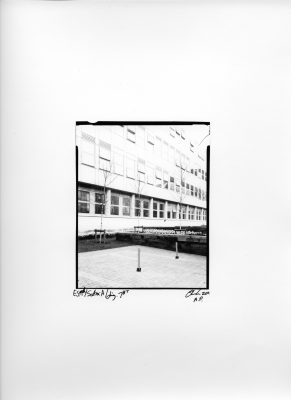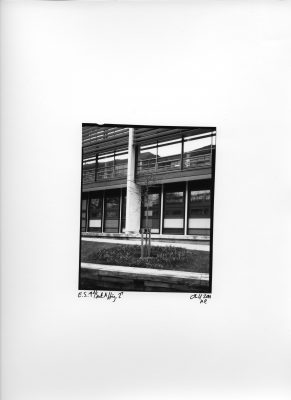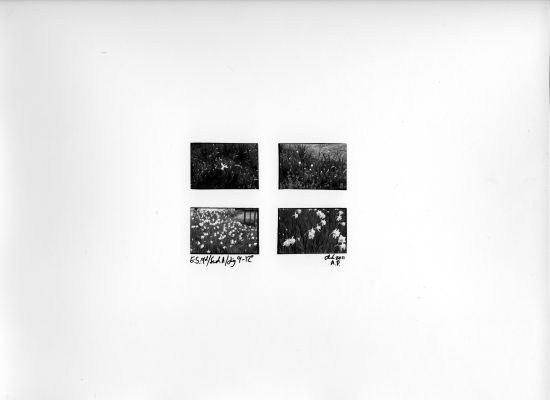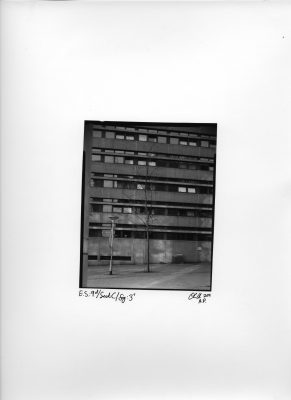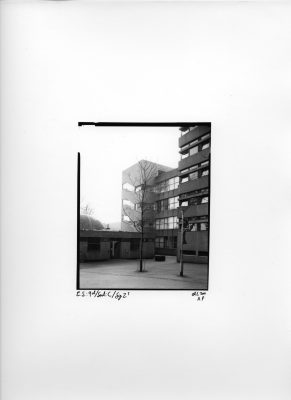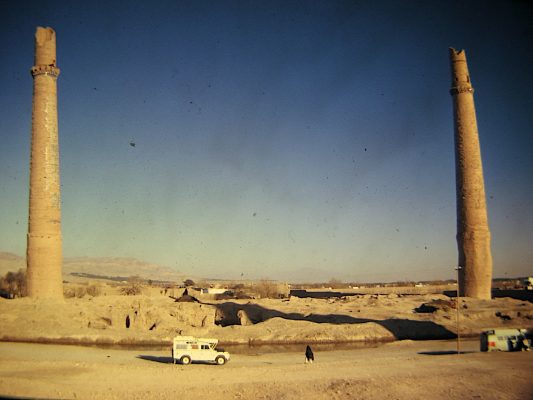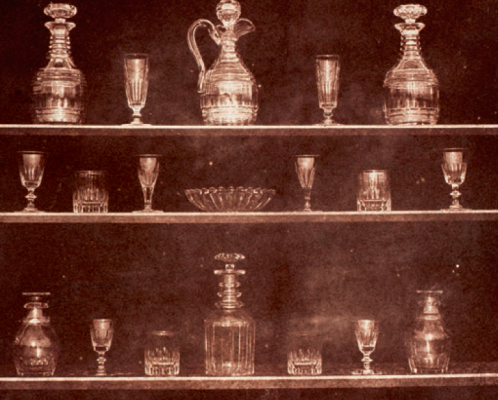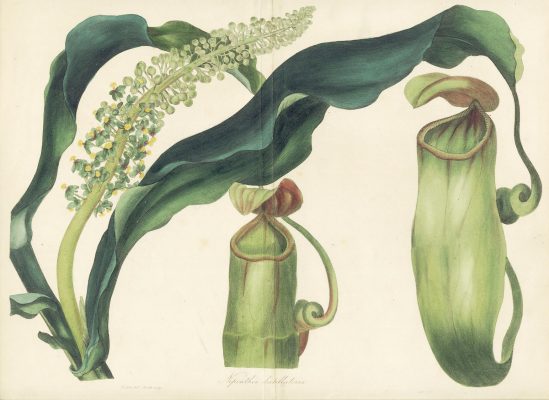ES9 is the latest body of work by Oliver Griffin in his archival series The Evaluation of Space. Taken between the summers of 2010 and 2011 on the University of Plymouth campus, six groups of black and white photographs survey the scene with typological exactitude: lab coats, gas bottles, pot plants, architecture.
As contact sheets of negatives ranging from standard 35mm film through to huge 10″ x 8″ negatives, the prints are saturated with resolution. The manual labour employed by Oliver Griffin to create these prints, often using clumsy, large format cameras, the emphasis on heavy paper, the traces of rust from the pegs holding the print while drying, and their display as collections behind glass celebrate the physicality of the work. They are objects as much as images.
In this sense, the photographs in this series sit comfortably alongside Oliver Griffin’s previous works, which include a framed collection of used lottery scratch cards (The Evaluation of Space: Part 5b), watercolours of flowers (5c), an installation mimicking a car park (6b), and an outboard motor (8d). Seen as a Gesamtkunstwerk in its early stages The Evaluation of Space includes installations, photographs, painting and sculpture.
The prevailing aesthetic of The Evaluation of Space is best expressed by a term coined by the artist: Borism. It evolved from observing the short attention span of today’s culture, its increasing hyperactivity, shouty imagery and the pandemic boredom that sets in split-seconds after we engage with anything. Borism addresses this phenomenon by producing works that are instantly boring. Only in retrospect, through recollection or through revisiting the works, do they become interesting: a row of houses made from cardboard, the architecture of a car park, the design of an outboard motor or the flora and fauna of a campus, all have aesthetic qualities that require time and calm in the audience to absorb. The alternative titles of each group give us a hint of their borist nature e.g.: Part 5b: ‘National lottery scratch cards’ Or: “The nihilism and waste of post-modern gambling produces such beautiful pieces of paper.”
Griffin celebrates the humanity of failure. On a purely technical level these blunt, slow, physical, black and white works (at times out of focus) fall short of today’s pristine printing technology, rich colour and autofocus. In terms of visual sensation, his borist prints don’t compete with the fast-paced produce of our culture of advertising and Smartphones. Failure is at the heart of his chosen subjects. The collection of unsuccessful lottery cards is the result of our success-driven world of zero-sum games in which one’s success is the other’s failure. Amidst this game of success and aspiration to perfection, failure is among the most humane experiences left to us. As such it should be treasured, and evaluated.
The editors deemed it appropriate to introduce Oliver Griffin’s work to the novelist and poet Lee Rourke, author of The Canal, which he describes as a book ‘about boredom (of course) and the fetishisation of modern culture’. You can read Rourke’s reactions to the photographs in Issue 3 of The White Review.
